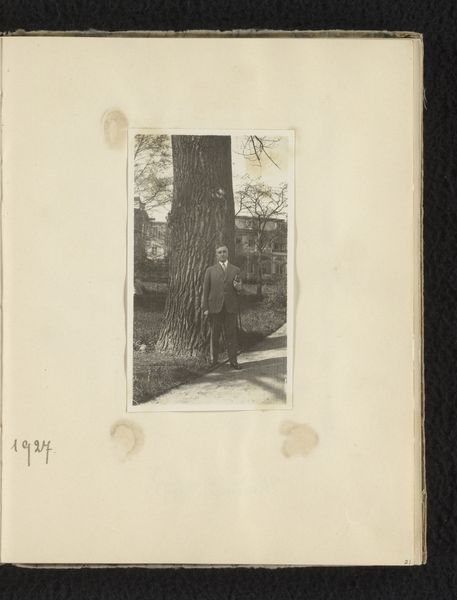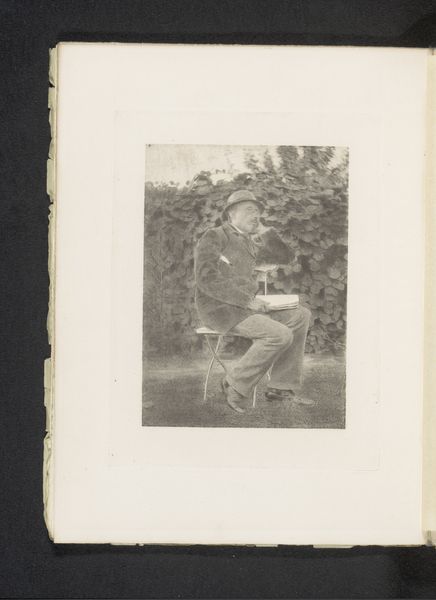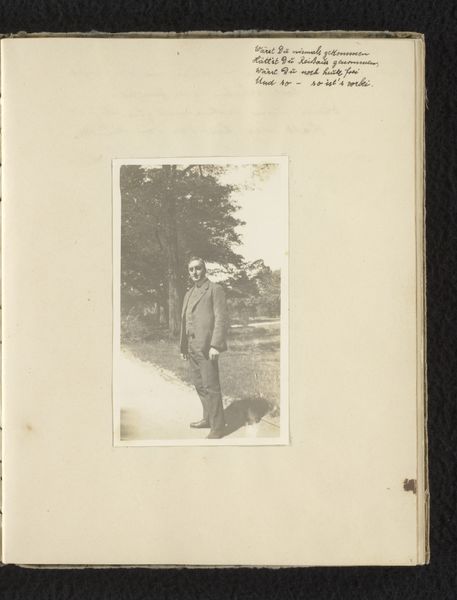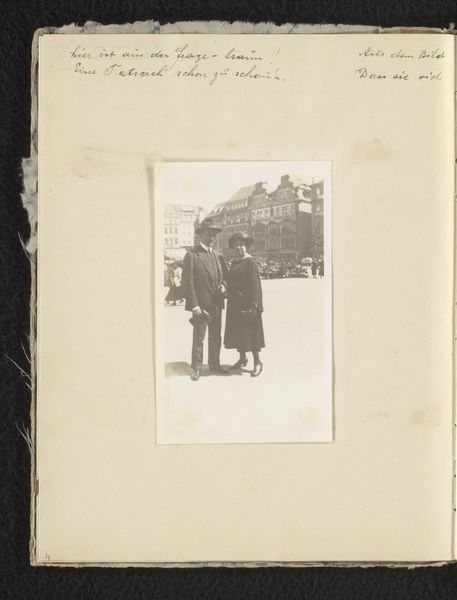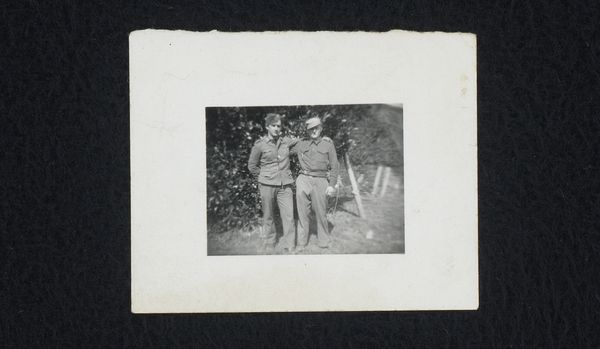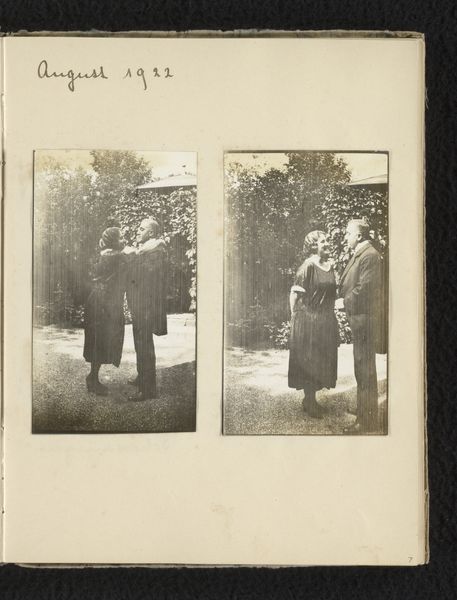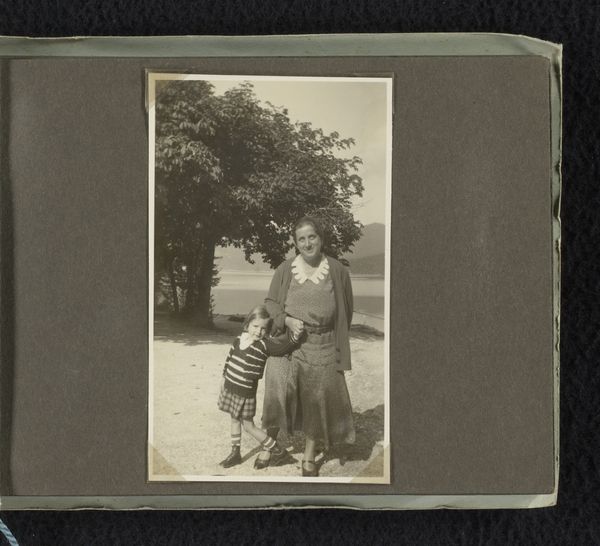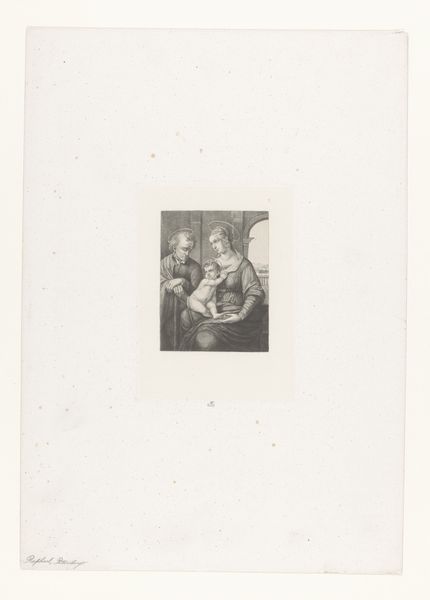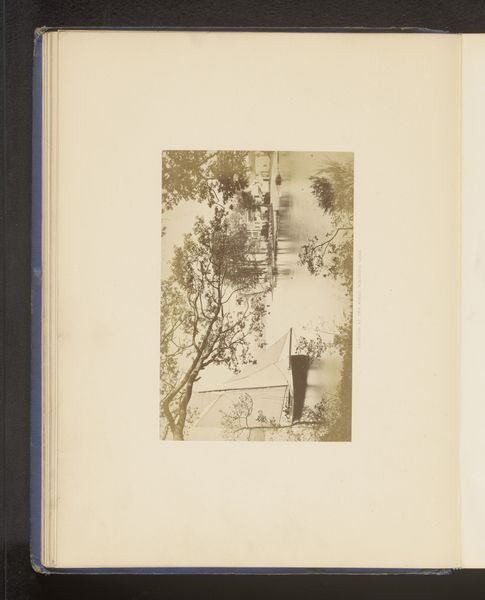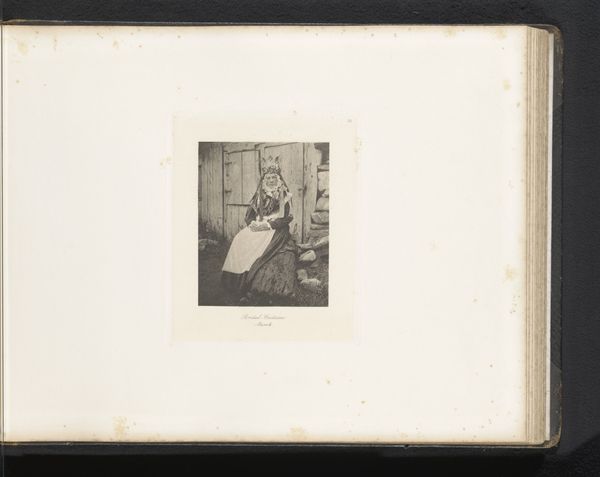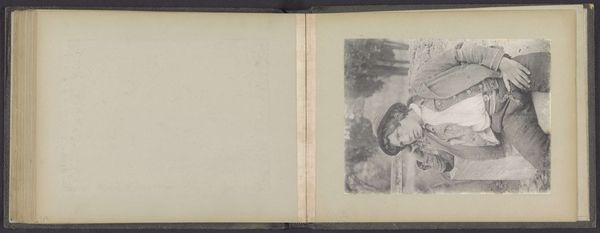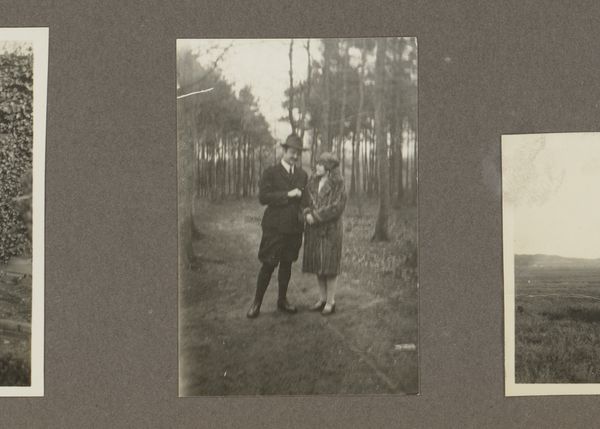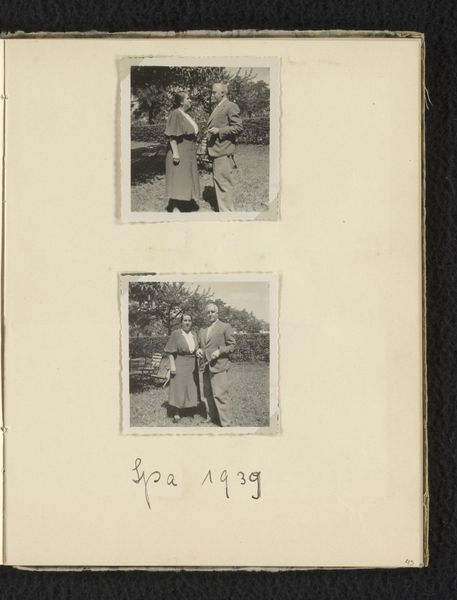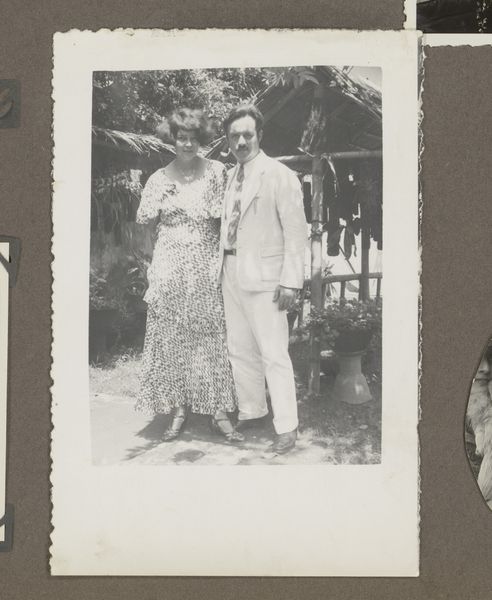
print, photography
#
portrait
# print
#
photography
#
realism
Dimensions: height 110 mm, width 65 mm, height 205 mm, width 160 mm
Copyright: Rijks Museum: Open Domain
Curator: Here we have a photographic print from 1925 titled "Eugen Wachenheimer op vakantie in Italië, 1925, Rapallo," or Eugen Wachenheimer on vacation in Italy, Rapallo. Editor: The portrait has a lovely subdued feel, like faded glamour. He’s perched on a balcony, overlooking a gorgeous Italian vista. A man caught in a reflective moment. I immediately wonder about his inner life, what’s on his mind at that instant. Curator: Well, this portrait style, with its clear nod to realism, places Mr. Wachenheimer within a particular social context. Vacations were increasingly accessible, reflecting emerging middle-class values centered around leisure and self-improvement through travel. Editor: You're right. The setting itself acts as a symbol. Italy, even then, carried the weight of cultural pilgrimage, representing a search for beauty, history, perhaps a reconnection with a classical ideal. Eugen in Italy could signify the man’s cultural aspirations, his connection to a shared, esteemed heritage. Curator: Absolutely. The print quality and photographic style indicate wider trends in capturing personal narratives for archival and commemorative purposes. Notice the carefully handwritten annotation of “Rapallo” suggesting its importance to the family narrative. These details become part of a historical record and are quite political in their own way. Editor: Beyond its socio-historical placement, it captures something about masculinity during that era. There’s an implied strength in his posture. However, also vulnerability with the way he looks softly into the camera. It strikes me as very authentic, devoid of grandstanding. A symbol of subtle grace perhaps? Curator: I appreciate how you view this image. The act of placing oneself in this landscape, documenting it via portraiture is also claiming the space, not just through physical presence, but by asserting a narrative of belonging in a place resonant with history. Editor: It has been fascinating deconstructing the imagery contained within the print with you, layering narrative and intention to one static, elegant portrait of its time. Curator: Indeed. It offers a perspective into understanding how photography contributed towards constructing notions of personal and cultural identity, embedded in the socio-political context of its time.
Comments
No comments
Be the first to comment and join the conversation on the ultimate creative platform.
